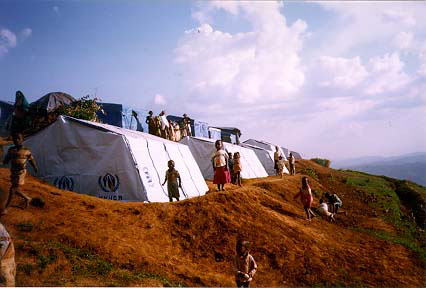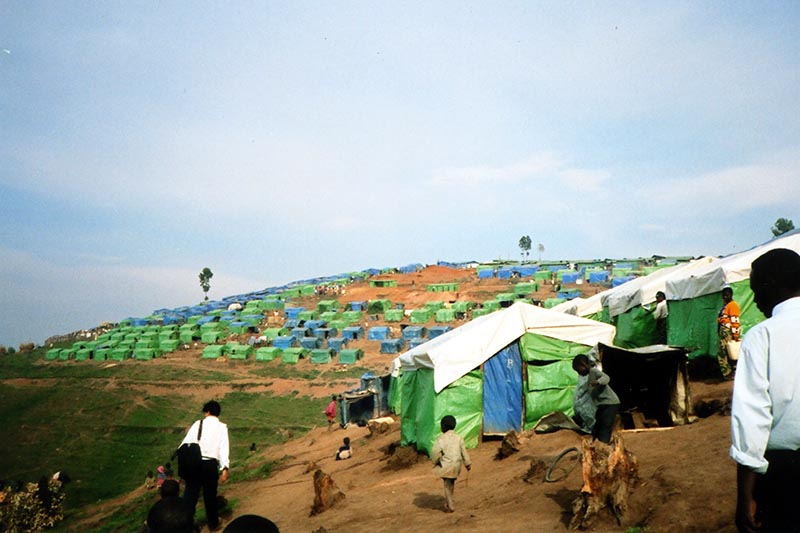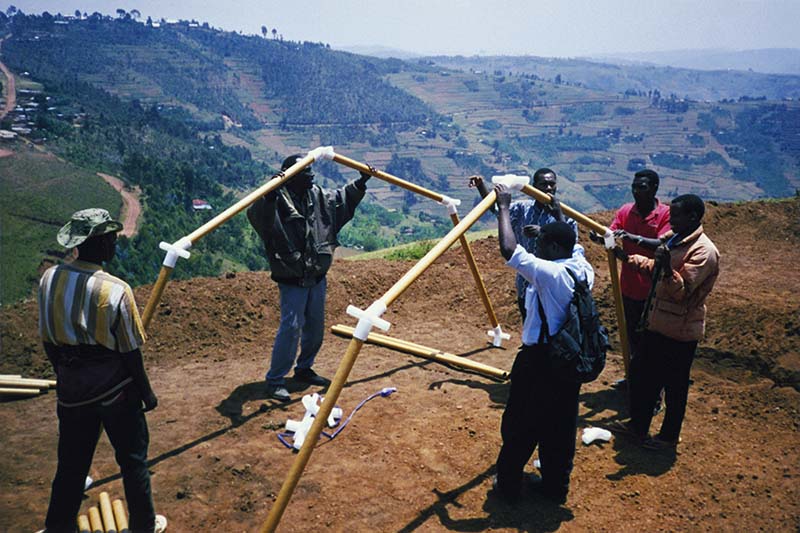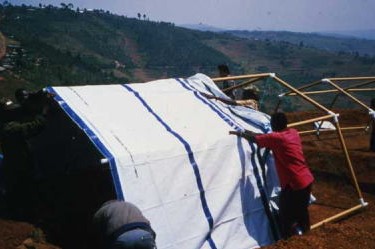WORKS - Disaster Relief Projects
国連難民高等弁務官事務所用の紙のシェルター
|
 |
 |
||
 |
 |
||
More than 2 million people became homeless when civil war broke out in Rwanda in 1994. The office of the United Nations High Commissioner for Refugees (UNHCR) normally supplied plastic sheets and aluminum poles to be rigged as temporary shelters. Rwandan refugees would sell the aluminum poles and then proceed to cut down trees to use branches for structural support. Contributing to already critical deforestation, it was obvious that alternative materials had to be found. A low-cost alternative, paper tubes, was introduced. The proposal was adopted and development of prototype shelters began.
Three prototype shelters were designed and tested for durability, assessed for cost and termite-resistance. Since paper tubes can be manufactured cheaply and by small and simple machinery, the potential to produce the materials on-site to reduce transportation costs. In 1998, fifty emergency shelters were constructed in Rwanda and monitored to evaluate the system in practical use.
フツ族とツチ族の内戦による虐殺を逃れた200万人以上にのぼるルワンダ難民たちに仮設住宅を提供するため、1995年の春、国連難民高等弁務官事務所(UNHCR)による取組みに関わることになった。この需要を満たすために、難民全員に支給される標準的な4m×6mのプラスチック・シートを使った紙管によるシェルターを提案した。
|